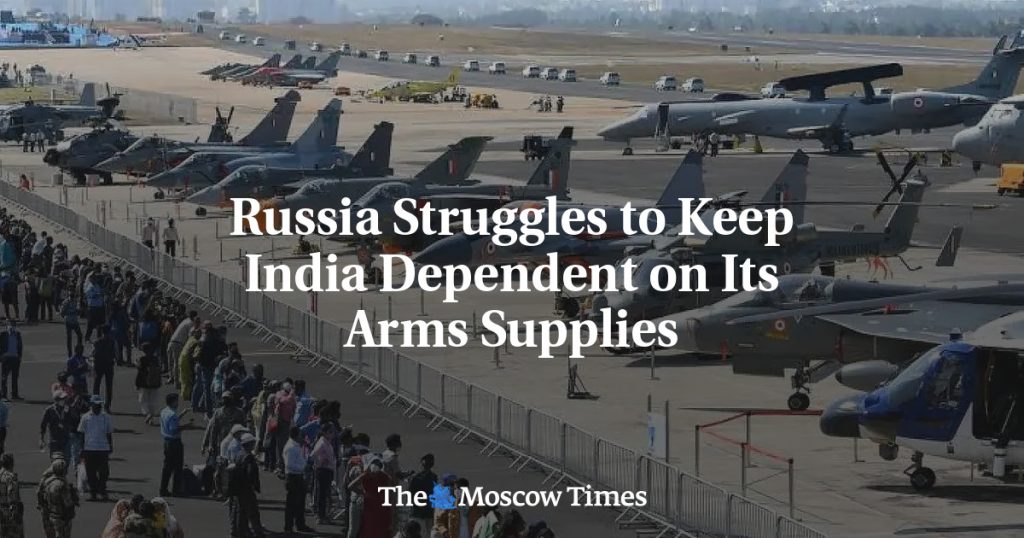Russia-India Defense Ties: A Legacy of Cooperation and Emerging Shifts
Decades of Defense Partnership: Reaching the $80 Billion Milestone
Russia’s state-owned arms exporter, Rosoboronexport, has revealed that total military exports to India have reached an impressive $80 billion, marking a significant milestone in a defense partnership that spans decades. This figure underscores the deep-rooted ties between the two nations, which have been a cornerstone of India’s military modernization efforts. Since India gained independence in 1947, Russia (and previously the Soviet Union) has been the primary defense supplier, providing critical military hardware that has shaped the Indian Armed Forces. Contracts between 1947 and 2005 totaled $30 billion, while the period from 2005 to 2025 added another $50 billion to the tally. These numbers highlight Moscow’s enduring role in equipping India’s military with advanced weaponry, ranging from fighter jets and submarines to missile systems and helicopters.
A Legacy of Dependence Facing Modern Disruptions
For decades, Russia has dominated India’s defense landscape, supplying the majority of its military equipment. The Indian Air Force’s Su-30MKI fighter jets, the Navy’s Talwar-class frigates, and the Army’s T-90 tanks are all testaments to this long-standing relationship. Even recent acquisitions, such as the S-400 air defense system, have reinforced Russia’s prominence in India’s military arsenal. However, this legacy of dependence is now facing significant disruptions. The ongoing war in Ukraine has severely impacted Russian defense production, leading to delays in delivering critical equipment and spare parts. Additionally, Western sanctions have further constrained Russia’s ability to meet its export commitments, forcing India to reassess the sustainability of its reliance on Russian arms.
India’s Strategic Shift Toward Diversification
In response to these challenges, India has been gradually reducing its dependence on Russian military hardware by diversifying its procurement sources. The acquisition of French Rafale multi-role fighter jets, American P-8i maritime patrol aircraft, and Israeli drones reflects a strategic shift toward a more balanced mix of suppliers. This diversification is not only a pragmatic response to Russia’s supply chain disruptions but also a deliberate effort to enhance India’s strategic autonomy. Furthermore, India’s “Made in India” initiative has gained momentum, prioritizing indigenous defense production. The development of homegrown systems, such as the Tejas fighter jet, the Akash missile system, and the Arihant-class submarines, is central to India’s modernization plans. By reducing its reliance on a single supplier, India aims to mitigate vulnerabilities, enhance technological capabilities, and avoid overexposure to geopolitical risks.
The Ukraine War: A Turning Point in Defense Relations
The 2024 report by the RE:Russia analytical platform highlights the profound impact of Russia’s invasion of Ukraine on its defense exports. With its own military requiring urgent replenishment, Moscow has struggled to meet its export commitments. Reports of Russian equipment failures on the battlefield have also raised concerns within Indian military circles about the reliability of certain systems. Additionally, India’s continued purchases of Russian weapons have drawn scrutiny from Western allies, particularly the United States. While Washington has refrained from sanctioning India over its S-400 deal, it has intensified pressure on New Delhi to reduce its engagement with Russian arms manufacturers. The promise of advanced technology transfers from the U.S. and Europe has further incentivized India to pivot away from Moscow. This geopolitical dynamic has introduced a new layer of complexity into the Russia-India defense relationship.
Rosoboronexport’s Fight to Retain Market Share
Despite the growing obstacles, Rosoboronexport is actively working to maintain its foothold in the Indian market. The company has been promoting new-generation defense systems, such as the Su-57 fifth-generation fighter jets and advanced helicopter models, to maintain India’s interest. Russia’s willingness to share critical defense technologies remains one of its key advantages. Unlike Western suppliers, which are often more restrictive, Russia has historically offered joint development opportunities and technology transfer agreements. These arrangements have long been attractive to India, which has prioritized self-reliance and indigenization in its defense strategy. As a result, Russia continues to be a relevant player in India’s defense ecosystem, even as New Delhi explores alternatives.
A Gradual Transition: The Future of Russia-India Defense Ties
While India is unmistakably moving away from a Russia-centric defense strategy, the transition is far from complete. Russian-origin platforms still constitute a significant portion of India’s military assets, necessitating continued cooperation for maintenance, spare parts, and upgrades. The key question is whether Russia can remain a competitive and reliable supplier in the face of economic sanctions, supply chain disruptions, and battlefield setbacks. The 2024 SIPRI report indicates that India’s defense procurements are increasingly shifting toward Western and indigenous sources, signaling a gradual decline in Russian dominance. However, this transition is evolving at a measured pace, reflecting the complexity of dismantling a decades-long partnership. As a result, while Russia’s role in India’s defense ecosystem is likely to diminish over time, it is unlikely to vanish overnight. The coming years will be pivotal in determining whether Moscow can adapt to these challenges and retain its position as a key defense partner to India.












